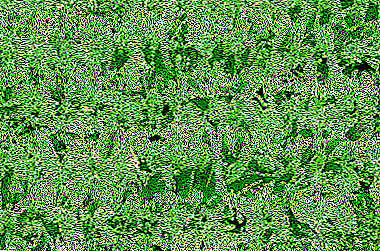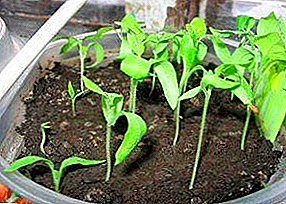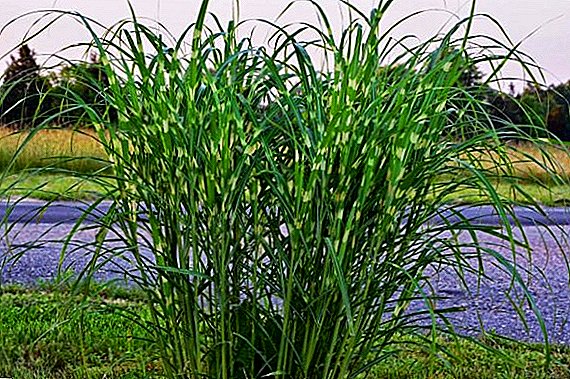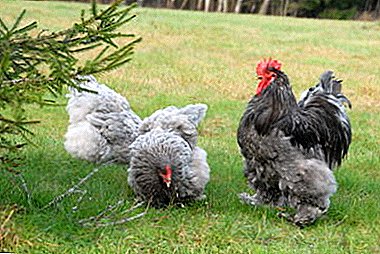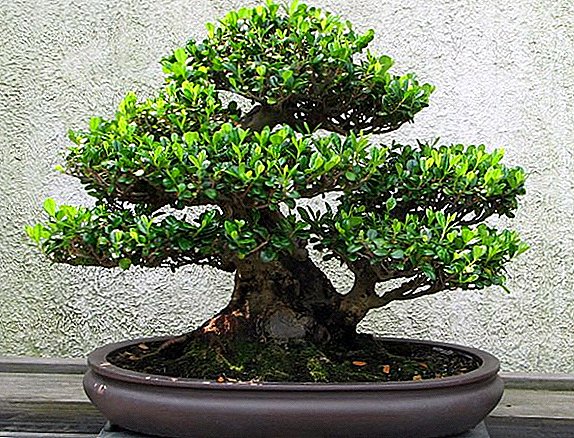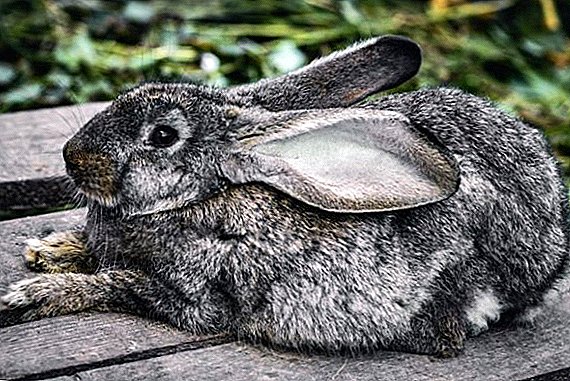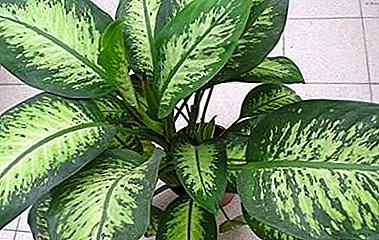
Dieffenbachia Lovely - an evergreen plant with a beautiful pattern on the leaves. It is unpretentious, and is often used in gardening of offices, the lobby of hotels, working rooms.
Easily propagated at home. It must be remembered that all parts of the flower are poisonous.
Home care
Dieffenbachia is popular in apartments, and does not require the creation of specific conditions for it. Care at home for Dieffenbachia Lovely is to regularly water and spray, as well as protection from sudden changes in temperature.
If the plant falls into ideal conditions for it - a flower may appear.
The Latin name of the plant is Dieffenbachia amoena.
Care after purchase
 When viewed in the store, it is worth choosing small squat plants that have bright leaf color. It is necessary to avoid buying specimens in which the lower leaves are wilted, cracked, begin to turn yellow.
When viewed in the store, it is worth choosing small squat plants that have bright leaf color. It is necessary to avoid buying specimens in which the lower leaves are wilted, cracked, begin to turn yellow.
The plant is thermophilic, and if the acquisition is made during the cold season, the pot should be insulated or placed entirely in a thermo bag.
Transplantation is carried out after a month - this will allow Dieffenbachia Lovely to adapt to new conditions.
Store pots are usually filled with a transporting substrate, therefore, before transferring to a new container, it is necessary to carefully clean the roots.
Watering
In the summer, Dieffenbachia Lovely is watered with warm water, which has been settled for a long period of time.
It is not recommended to transfer the whole lump.
Its root system is not so well developed, and with an excess of moisture it immediately begins to rot. Therefore, watering should be done after the ground has dried out by about a third.
Regular spraying of the leaves is necessary, as well as their rubbing from dust with a soft cloth. The plant loves moisture, and the higher the temperature in the room where it is located, the more often it is worth spraying.
In winter, the heat emanating from central heating radiators is disastrous — it needs to be covered with something, or the pot can be moved from the window.
Bloom
At home, it blooms very rarely in early spring - for this you need to provide the plant with the most favorable conditions.
Let out from the leaf bosom inflorescence-cob, which envelops the light green cover. The flowering process continues for several days, after which it is recommended to cut it, because the flower spike pulls out most of the nutrients.
Crown formation
Pruning can be done at any time of the year. It is necessary if any leaves are damaged, or begin to die due to age.
You can also remove the top of the flower to slow its growth. If the stretched trunk is cut at a height of 10-15 centimeters above the ground level, then side shoots will appear and the plant will bush.
IMPORTANT! All trimming operations should be done only in thick rubber gloves, because Diffenbachia juice is toxic!
Slices are processed with crushed coal. Cut off the tip or part of the trunk can be used in the form of cuttings for subsequent reproduction.
In the photo below you can get acquainted with the appearance of Diffenbachia Charming and plant characteristics:






Soil
For planting a special ground is acquired for Dieffenbachy. Or it mixes up independently, from 3 parts of the deciduous earth and on 1 part of a humus, the peat earth and sand. You can add pieces of charcoal, bark.
Diffenbachia charming loves feeding. In the summer, once every 10-14 days, you can add organic or mineral fertilizers.
Since autumn, the volume of the substances introduced is reduced by half, and in winter it stops altogether. It is not advisable to use fertilizers, which include lime.
Planting and transplanting
 Young plants are transplanted every year in the spring months, adults - at least once every 3-4 years.
Young plants are transplanted every year in the spring months, adults - at least once every 3-4 years.
Sometimes it is quite difficult to transplant an adult flower because of its size - in this case, it is possible to replace the top layer of soil (approximately 1/3 of the pot volume).
The pot for transplantation is selected with holes, 2-3 centimeters larger in size than the previous one.
A layer of expanded clay drainage falls to the bottom to protect the root system from water stagnation.
Transplanting from an old pot to a new one is carried out by transferring an earthen coma (not to be confused with the first transplant after the purchase, when the roots need to be cleared from the transport soil).
Breeding
The reproduction of lovely dieffenbachia is performed at any time of the year by cutting off the top of a plant or a fragment of a stem. It is best to combine this with formative pruning.
The cutting for rooting is chosen with 2-3 buds and placed in a container with water or immediately stuck into a mixture of peat and sand. After that, the container with the cuttings should be covered with a can or a plastic cap, and periodically ventilated.
IMPORTANT! If the cuttings start to rot from the bottom and do not give roots, the air temperature, where they are located, is very low. It is necessary to move them to a warmer place and organize a mini-greenhouse.
Rooted fragments are planted in real soil, 2-3 in one pot. The first time after planting is recommended to hold them again under the hood.
Growing up
 Growing dieffenbachia lovely at home is not a big deal. First of all, it is necessary to determine its place of permanent location - it should be a room with bright light, however, direct sunlight should not fall on the plant.
Growing dieffenbachia lovely at home is not a big deal. First of all, it is necessary to determine its place of permanent location - it should be a room with bright light, however, direct sunlight should not fall on the plant.
Temperature should be maintained without sudden changes.
The flower requires abundant watering, but without stagnant water. Hygiene procedures are mandatory - removing dirt and dust from the top of the leaves.
Temperature
The optimum summer temperature for a plant is + 20-22 degrees, but under the conditions of irrigation and spraying it can be indoors at + 28-30 degrees.
In winter, it is best to move the pot to a room with a temperature of + 16-18 degrees. At +10 and below, the root system starts to freeze and rot in dieffenbachia.
The plant does not tolerate drafts.
When airing the room in which it stands, the flower must either be protected from cold air flows, or moved temporarily to another place.
Benefit and harm
The sap of the plant is poisonous and can cause irritation if it comes into contact with open skin. In case of accidental contact with mucous membranes, the glands and tongue swell up.
All work with the flower (transplanting, pruning, etc.) is best done in thick rubber gloves, and at the end - wash your hands well with soap and water. It is not necessary to keep it in the children's room, as well as in a place where the child can reach.
At the same time, beautiful delightbachia cleans the air from a variety of harmful substances: xylene, benzene, various formaldehydes.
The air is also well cleaned: Anthurium, Ficus Benjamin Kinki, Peperomiya tuberous, Hoya Carnoza, Deciduous Begonia, Dracaena Fragrant (Frahrans), Dieffenbachia Spotted and some others.
Diseases and pests
 Problems with dieffenbachia are caused by improper care:
Problems with dieffenbachia are caused by improper care:
- Leaves dry or turn yellow - the plant is in a too cold room, a temperature drop is experienced, insufficient watering is performed;
- The appearance of spots on the leaves - Dieffenbachia falls under direct sunlight;
- The edges of the leaves turn brown - insufficient air humidity.
It is affected by the shield and spider mite. Despite the fact that the sap of the plant is poisonous, it does not prevent insects from feeding them.
A spider mite is recognized by the whitish web that appears on the leaves. To remove it, wash the leaves with warm, soapy water on all sides or treat with chemicals.
The shield looks like convex cones of brown color. At the same time the leaves begin to dim and dry. Adults are removed from the plant with a wet sponge with soapy water, if necessary, additionally spraying of insecticides.
Conclusion
Diffenbachia charming at home can grow up to 1.5 meters high. However, the plant does not need to create special conditions for keeping; it is only necessary to water it regularly and plentifully and transplant it annually into new soil.
Too overgrown flower can be cut by running the growth process on a new one.



